Papers by Jacob Welch
Journal of Urban History, 2019
Heritage, 2020
This paper reports on heritage initiatives associated with a 12-year-long archaeology project in ... more This paper reports on heritage initiatives associated with a 12-year-long archaeology project in Yucatan, Mexico. Our work has involved both surprises and setbacks and in the spirit of adding to the repository of useful knowledge, we present these in a frank and transparent manner. Our findings are significant for a number of reasons. First, we show that the possibilities available to a heritage project facilitated by archaeologists depend not just on the form and focus of other stakeholders, but on the gender, sexuality, and class position of the archaeologists. Second, we provide a ground-level view of what approaches work well and which do not in terms of identifying aspects of cultural heritage that are relevant to a broad swath of stakeholders. Finally, we discuss ways in which heritage projects can overcome constraints to expanding community collaboration.
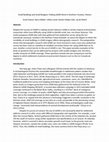
Despite the success of lidar in making ancient features visible in certain tropical environments,... more Despite the success of lidar in making ancient features visible in certain tropical environments, researchers often have difficulty using lidar to identify small, low, non-linear features. This study juxtaposes lidar data with data gathered from pedestrian survey along the Ucí-Cansahcab causeway, located in the Northern Maya lowlands, to assess the degree to which the invisibility of small buildings in lidar imagery affects demographic research. The juxtaposition shows that demographic research with lidar can move forward in some cases once pedestrian survey has been used as a baseline to establish correction factors for using lidar data on their own. Another current barrier to the use of lidar is cost. This paper provides examples of the kinds of questions that can be addressed by projects with smaller budgets and, therefore, smaller amounts of lidar coverage. These questions include site size comparisons and the degree to which settlement clustered around ancient features such as the Ucí-Cansahcab causeway. A pesar de los logros que ha causado el lidar en hacer elementos antiguos visibles en ciertos ambientes tropicales, muchas veces los investigadores usando lidar tienen problemas identificando elementos no-lineares, bajos y pequeños. Este estudio yuxtapone la informacion obtenida por medio de lidar con aquella recuperada por medio de transectos a pie a lo largo de la calzada Uci-Cansahcab, localizada en las tierras bajas Mayas del norte, para poder determinar el grado al cual la incapacidad del lidar para reconocer construcciones pequeñas afecta investigaciones demográficas. Esta yuxtaposición muestra que la investigación demográfica realizada por medio de lidar puede ser avanzada en algunos casos una vez ya que los recorridos a pie hayan sido usados para crear una linea base que establesca factores de corrección para sólo usar información obtenida por medio de lidar. Otra barrera contemporanea para usar lidar es el costo. Este documento provee ejemplos de los tipos de preguntas que pueden ser atendidas por proyectos con pocos fondos y, por lo tanto, con menores cantidades de cobertura por medio de lidar. Estas cuestiones incluyen comparaciones entre tamaños de sitios y el grado de asentamiento a lo largo de elementos antiguos como la calzada Uci-Cansahcab.
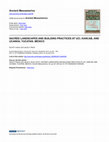
During the emergence of regional hierarchy around the site of Uci in northwest Yucatan, Mexico, o... more During the emergence of regional hierarchy around the site of Uci in northwest Yucatan, Mexico, ordinary people affected power relations in at least two ways. First, in the Late Preclassic and Early Classic periods, Uci had the largest ceremonial center and the largest population within a 20 km radius. Uci also physically linked itself to smaller settlements, such as Kancab and Ucanha, by means of a broad stone causeway. Yet Kancab and Ucanha's quadripartite placement of causeways and central plaza suggests that its households created a sacred landscape that gave them a degree of ritual autonomy. Ordinary people impacted power relations a second way by participating in the development of the megalithic architectural style, which was used in the region's most authoritative buildings. The use of this style in domestic platforms illustrates the ability of modest households to make their own decisions and to act in ways that constituted society at large.
Book Chapters by Jacob Welch
Hutson, Scott and Jacob A. Welch
2016 Neighborhoods at Chunchucmil. In The Ancient Urban Maya: Ne... more Hutson, Scott and Jacob A. Welch
2016 Neighborhoods at Chunchucmil. In The Ancient Urban Maya: Neighborhoods, Inequality, and Built Form, pp. 97-138. University Press of Florida, Gainesville.


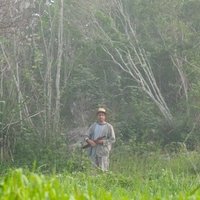


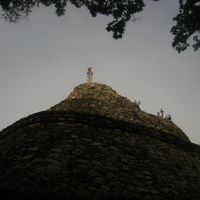
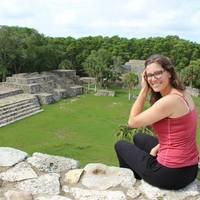


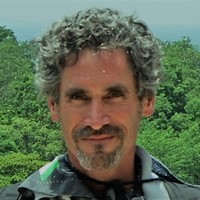

Uploads
Papers by Jacob Welch
Book Chapters by Jacob Welch
2016 Neighborhoods at Chunchucmil. In The Ancient Urban Maya: Neighborhoods, Inequality, and Built Form, pp. 97-138. University Press of Florida, Gainesville.
2016 Neighborhoods at Chunchucmil. In The Ancient Urban Maya: Neighborhoods, Inequality, and Built Form, pp. 97-138. University Press of Florida, Gainesville.